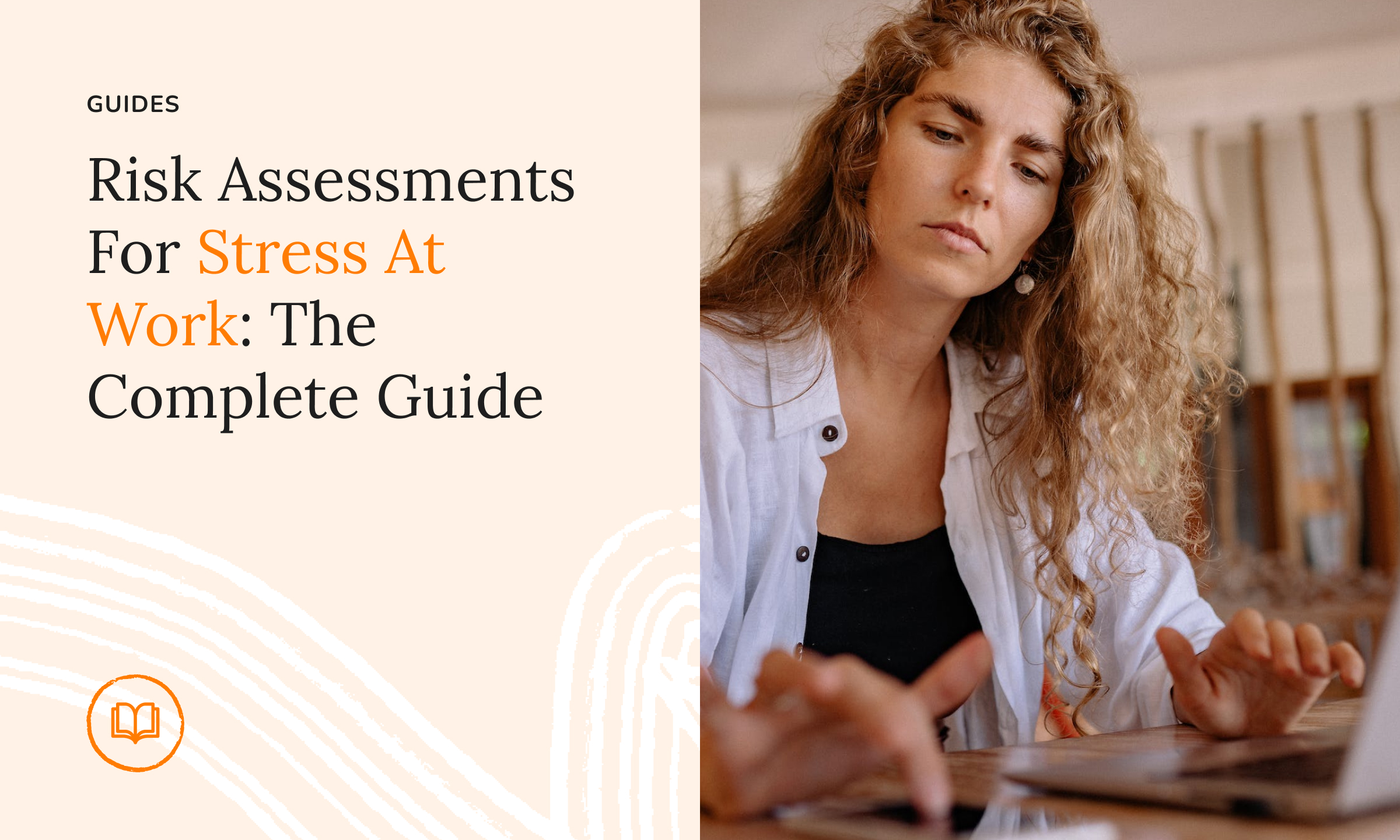Stress at work is a dangerous issue. It demoralizes, demotivates and damages your company’s financial health, and it’s terrible for both our physical and mental health! If you’re worried about the welfare of your employees and your company, it’s a good idea to act preventatively. One way to do so is to conduct regular risk assessments for stress at work.

What are risk assessments for stress at work?
A stress risk assessment involves examining the workplace to identify potential sources of stress and assess the level of risk associated with them. The assessment can be conducted by an external consultant or an internal specialist, or it can be done by managers or employees themselves. Here are the typical steps involved in conducting a stress risk assessment:
- Identify the hazards: The first step is to identify the potential sources of stress in the workplace. This may include excessive workloads, long hours, lack of control over work, poor communication, harassment or bullying, etc.
- Identify the people at risk: The next step is to identify the employees who may be at risk of stress. Think about those who have high workloads, those with little control over their work, those who are being bullied or harassed, those who are new to the job, those who have personal problems that are affecting their work, etc.
- Evaluate the risks: Once the hazards and people at risk have been identified, the next step is to evaluate the risks associated with each hazard. Assess the likelihood and severity of harm that could result from the hazard.
- Take action to control the risks: Based on the risk assessment, appropriate actions should be taken to control the risks. You might implement policies and procedures to address the hazards, provide training and support for employees, improve communication, and/or make adjustments to workloads or schedules.
- Monitor and review: The final step is to monitor and review the effectiveness of the actions taken. This may involve ongoing monitoring of employee wellbeing and satisfaction, regular review of policies and procedures, and periodic reassessment of the risks associated with workplace stress.
The assessment can be conducted by an external consultant or an internal specialist, or it can be done by managers or employees themselves.
Overall, the goal of a stress risk assessment is to identify potential sources of stress and take action to control the risks associated with them, in order to promote a healthy and productive work environment.
Why are risk assessments for stress important?
Risk assessments for stress are important because they help to identify and manage potential risks to employee health and wellbeing. By conducting regular assessments, employers proactively identify and address workplace stressors, reduce the risk of stress-related illnesses and injuries, and promote a healthier and more productive workforce.
The goal of a stress risk assessment is to identify potential sources of stress and take action to control the risks associated with them, in order to promote a healthy and productive work environment.
How do I conduct risk assessments for stress?
To conduct a risk assessment for stress, employers should first identify the sources of stress in the workplace, such as job demands, organizational culture, relationships with coworkers, and work-life balance. They should then assess the level of risk associated with each source, considering factors such as the severity and duration of exposure, the likelihood of harm, and the vulnerability of employees. Based on this assessment, employers then develop and implement strategies to mitigate or eliminate the identified risks.
Employers have legal responsibilities to manage and prevent workplace stress under health and safety laws.
What are my legal responsibilities as an employer about stress in the workplace?
Employers have legal responsibilities to manage and prevent workplace stress under health and safety laws. These laws require employers to provide a safe and healthy work environment, which includes protecting employees from the risks of workplace stress. Employers who fail to take adequate measures to prevent or manage workplace stress could face legal action and penalties.
In conclusion, conducting risk assessments for stress at work is an important part of promoting employee health and wellbeing and preventing the negative consequences of workplace stress. Employers should take proactive steps to identify and manage workplace stressors, including the use of tools such as nilo.health to support employee mental health and wellbeing.
How can nilo.health help?
Whether you’ve realized you have a high risk of stress at work due to your risk assessment or you simply want to act proactively and preventatively (smart!), nilo.health provides the support your employees need. 1-to-1 counseling with leading psychologists from around the globe, manager training and a massive self-guided library with tools to improve the ways your team experiences and manages their stress all has a massive effect. 71% of employees struggling with stress improve after using nilo.health. Book a demo today!







